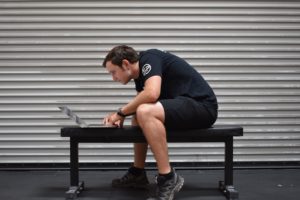
Never skimp on anything that separates you from the floor! I’ve learned this the hard way wearing cheap shoes with no support and sleeping on an Amazon mattress during college. It took me 4 years until it finally dawned on me why my knees, neck, and back always hurt.
Your feet are the first contact point to the ground so it’s important to provide the correct support. This is where excellent quality shoes and orthotics are helpful! Without diving too much into an anatomy lesson, people either have high arches or low arches or somewhere in between. These arches can also be rigid or flexible determined during an assessment with your Physical Therapist.
Most orthotics are created to provide stability and support for individuals that have a low arch aka pancake feet (guilty). On the other hand, individuals with high arches would benefit from shoes/orthotics that have a shock absorbing feature. Now whether you have high arches or low arches both are very much functional unless pain is involved.
These two different foot profiles come with different ailments in the ankles, shins, and feet such as plantar fasciitis, achilles pain, shin splints, and heel pain. Again, since the feet are the first contact point to the ground this can also affect up the chain into the knees, hips, and lower back especially if you find yourself on your feet regularly.
If you’re having any of these pains here are 3 reasons why you need orthotics:
1. Orthotics will complement your comprehensive plan of care with your Physical Therapist to offload the overstressed and irritated tissues as well as decreasing pain to get you back to what you love. Orthotics have been shown to improve outcomes in the short-term for non-chronic issues to get you back more quickly.
2. If you’ve been frustrated and have tried everything from stretching, exercises, massage, foam rolling, ice/heat, or all the above for your ankle and foot pain then orthotics could be the missing piece to decrease the stress on those tissues little by little throughout the day. These minor changes will compound over the course of days/weeks/months to keep you active more consistently.
3. Finally, orthotics naturally improves the alignment of the kinetic chain. It’s important to continue to address this with a specialist however, it can provide that much-needed body awareness to the knees, hips, and lower back once support is provided for the feet. In combination with exercise therapy and soft tissue work, this works wonders to provide long-term relief and solutions to manage your aches and pains!
One caveat is the amount of orthotics on the market. We’ve recommended over-the-counter orthotics since the price point is much less (think Dr. Scholl’s or Superfeet). If people love them and find value then a customized fit would be the best long term option. This customization should be tailored to your plan of care and your activities.
In terms of breaking in the orthotics, start with one hour wearing them on day one and increase by one hour everyday up to 30 days before expecting to see any dramatic changes as well as avoiding any strenuous activities in them until they’re comfortable with normal day-to-day use.
As always, we hope this helps! For any questions and all suggestions, please email us at TeamSP@SportsPerformancePT.com
–Dr. Jason

STAY CONNECTED
Instagram: CLICK HERE
Facebook: CLICK HERE
YouTube: CLICK HERE
Podcast: CLICK HERE
TUNE IN TO OUR PODCAST












